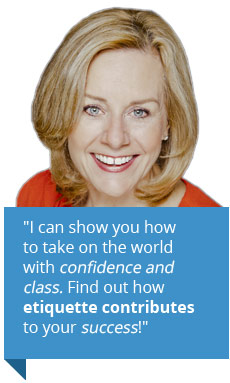Tip Creep: New Rules for Tipping in a Digital World
March 13, 2016
Innovation has been an amazing thing, hasn’t it? In our desire for everything to be bigger… better… faster… technology has answered the call. However, one of these digital enhancements has actually inflated, and confused, how much we give as gratuities. Here’s how:
You may have seen the new, tablet-based point-of-sale (POS) systems that are replacing cash registers in coffee shops, salons, delis and even dry cleaners. If you’ve been presented with an iPad to sign-off on a credit card transaction, then you’ve used one. Many of these digital POS systems have a section where you can add a tip. Seems harmless enough, and maybe even efficient, and here lies the problem:
Lets say you go to your favorite coffee shop and get in line to purchase a $4 coffee. You order your double latte, hand the clerk your credit card and he or she turns the iPad toward you to complete the transaction. You stood in line to order a coffee –and will have to wait in another line to pick up your coffee — and now suddenly you’re presented with tip options? The server is staring at you, awaiting your next move and there is a line of impatient people waiting behind you. What do you do?
Welcome to the world of “tip creep.” Tip creep is the expectation of an exorbitant tip where none was demanded or even expected before (like at a dry cleaner). It’s fueled not only by POS’s tip suggestion, as well as the pressure to tip the counterperson who is waiting for you complete your purchase (as is everyone in line behind you.)
Most people avoid the “No Tip” button as they don’t want to be seen as “that guy.” The preset default tip amounts then tap into the power of suggestion and quick convenience. With those, gratuities can be inflated to 50 percent or higher. (Which, by the way, is what you would have paid if you opted for a $2 gratuity on the $4 cup of coffee!)
In short: You’re thrown into an uncomfortable position, and all you wanted was to get your early morning caffeine fix!
Here are some things to keep in mind when it comes to gratuities on point of sale technology.
When at casual, order-at-the-counter establishments:
- Pay with cash. These types of purchases are often under $10 anyway. Plus, you’ll save yourself additional fees if your bank charges you for debit transactions.
- Tipping is at your discretion. If you feel that you’ve had exceptional service, leave a tip that you feel comfortable with.
- Avoid giving in to pressure from those behind the counter or in line behind you.
When at a full-service, sit-down restaurant:
- Tip your waitperson at least 15 percent for good service and 20 percent for great service. If the kitchen made a mistake on your order, avoid punishing the server with little or no tip. Tip as you would normally, and tactfully talk to the waiter and/or management about the problem that occurred so that it can be rectified.
- Refrain from writing things such as “Better luck next time” or “Find sour cream” on the tip line. Passive-aggressive notes such as these are in very poor taste and can actually work against you (especially for the “Find sour cream” guy).
Would you like some more tips on tipping etiquette? Check out my Guide to Tipping Etiquette or download my handy, one-page Tipping Etiquette Cheat Sheet.
 Print This Post
Print This Post
Leave a Reply




2 Responses to Tip Creep: New Rules for Tipping in a Digital World
I’d appreciate specific information for my hairstylist. She is the owner, and only stylist, and when she swipes my card there is no way to evade the tip options. I feel like she should raise her prices – she’s her own boss – instead of asking me to bonus her.
Since I’m not her boss, or her mother, it seems my only option is to find another stylist – and repeat the process.
Help!
Wendy. There may be good reasons your stylist does not merely increase her fee. Any income earned by the business is taxed. Then the owner pays taxes on the amount they take as salary. Therefore taxed twice on those dollars earned. If the owner operator receives a tip in addition to a lower fee for hair services she is only taxed once as personal income on the tip amount. Nonetheless, my recommendation is to speak frankly with your stylist and express your concerns. You prefer to have one charge for your hair do as opposed to paying a fee and a tip. If business owners understand the concerns of their clients better they could deliver better service.